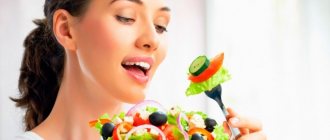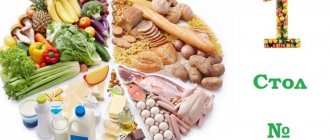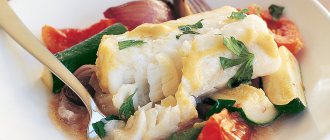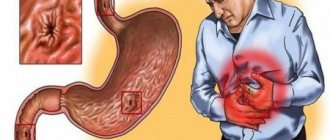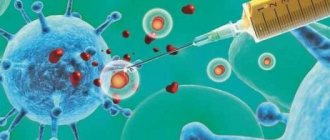Edited by an expert:
Nadezhda Primochkina, nutritionist - 06.06.2020
Doctors prescribe the therapeutic diet “table number 4b” in the remission stage for diseases of the gastrointestinal tract, liver, as well as the pancreas and biliary tract. The goal is to weaken the fermentation processes.
With this diet, the amount of salt in the diet is reduced, which has a less strict diet compared to diets 4 and 4a.
Main symptoms of intestinal diseases
With intestinal diseases, frequent bowel movements are observed.
Since the functions of the small and large intestines differ from each other (the small intestine is responsible for the absorption of nutrients into the blood, the large intestine is responsible for the production of vitamins, the processing of fiber, the formation of feces and their timely excretion), the symptoms will differ depending on the location of the disease.
Symptoms of colon diseases:
- Pain syndrome. Pain is more often observed in the lateral abdomen, less often in the epigastric region or above the navel. The pain has a dull, arching nature, which subsides after bowel movements or the release of gases.
- The stool is frequent, has a strong odor, and can sometimes contain mucus, blood, or have stripes resembling swamp mud.
- Rumbling, bloating, accumulation of gases. These symptoms intensify in the afternoon and weaken towards night.
- If discomfort occurs due to infection, the body temperature rises, headaches and dizziness appear.
Signs of inflammatory and tumor diseases of the colon are serious metabolic disorders. As a result, the patient feels weakness, exhaustion, the functions of the genital organs are impaired, and incontinence of gases and feces.
Symptoms of diseases of the small intestine
- Pain in the navel area.
- Loose stools with a light color and a sour, unpleasant odor. Sometimes parts of undigested food are observed in the consistency of stool.
- Bloating, feeling of fullness.
- Temperature increase. Thermometer readings vary depending on the number of microbes and the degree of intoxication of the body.
With prolonged manifestations of such symptoms, pathologies of other organs and systems may develop (the skin becomes thin and dry, nails become brittle, joints become swollen and painful).
Read: Treatment of rotavirus infection and diet for intestinal flu
Objectives and principles of nutrition for a sick intestine
Diseases of the gastrointestinal tract occur due to poor nutrition.
Scientists have found that the occurrence of most diseases of the gastrointestinal tract is associated with regular violations of the diet.
Therefore, it is important to adhere to certain norms and rules of nutrition that will help restore the intestines to their previous functions.
When composing a diet for a sick person, it is important to be guided not only by generally accepted standards, but also to take into account the individual needs of the body. With the help of a properly selected diet, you can solve the following problems:
- bring bowel function back to normal;
- stimulate restoration processes in the mucous membranes of the intestines;
- eliminate intolerance to certain dishes;
- replenish the body with missing vitamins and minerals;
- eliminate metabolic disorders;
- normalize the composition of microflora.
For intestinal diseases, diet planning should be based on the following principles:
- nutrition should help treat the disease and prevent further complications;
- nutrition should take into account the individual characteristics of the patient (taste preferences,
- accompanying ailments, digestive features).
Nutrition for intestinal diseases must meet the following rules:
- food should be consumed in small portions 5-6 times a day;
- avoid eating dry food;
- try not to overeat;
- products should be balanced, rich in proteins, fats, carbohydrates and fiber;
- the diet needs to be varied, the body should not lack any elements;
- Products should only be steamed, baked or boiled.
When composing a diet for a person with a diseased intestine, it is important to take into account the effect of foods on intestinal motility. In this way, stool consistency and frequency of bowel movements can be normalized. According to these parameters, products are divided into 3 groups:
- Those that increase motor skills
- Foods that reduce motor skills
- Neutral products (do not affect motor skills)
Advantages and disadvantages
| pros | Minuses |
|
|
Nutrition during the manifestation of diarrhea syndrome
Rice water will help with diarrhea.
Diarrhea is a symptom of an intestinal disorder that is accompanied by frequent loose stools.
With diarrhea, intestinal motility increases, and it stops absorbing fluid normally. Therefore, you need to eat foods that can reduce intestinal motility and restore its function to absorb fluid.
In the first days of diarrhea, attention must be paid to fluids. Drink plenty of warm water to help rehydrate your body. Healthy drinks include strong tea with lemon, apple juices, alkaline non-carbonated drinks, raisin and blueberry infusions.
On the second day it is allowed to eat crackers without flavoring additives and powders. You need to eat a small portion every hour and drink plenty of liquid. On the third day, you can gradually introduce foods that reduce intestinal motility and are most useful for diarrhea, namely:
- Rice water and liquid porridges. Rice does not contain fiber (which acts as a laxative) and has binding properties. It is recommended to eat one cup of rice water or porridge every 2 hours.
- Bananas. They replenish the body with potassium, which is washed out of the body during diarrhea. To do this, consume 2 bananas every 4 hours.
- Weak meat and chicken broths.
- Porridges that coat the gastric mucosa (semolina, oatmeal, buckwheat).
- White bread crackers.
- Baked or boiled apples (contain elements that bind toxins and restore beneficial intestinal microflora).
- Lean fish and lean meat (no skin, bones or fat).
- Boiled carrots and puree from them. Enriched with vitamin A, which improves the condition of weakened intestinal mucosa and has adsorbing properties.
- Fine-grained low-fat cottage cheese, boiled eggs or steamed omelettes will replenish the body with proteins.
- Vegetable soups and purees.
- Kissels and veins made from fruits and berries rich in vitamins.
Read: Foods containing large amounts of protein: benefits for the body
Sample menu for the week
| Days | Breakfast | 2nd breakfast | Dinner | Afternoon snack | Dinner |
| Day 1 | Protein omelet. | Cranberry jelly. | Vegetable broth soup with boiled vermicelli. | Calcined cottage cheese. | Mashed potatoes (liquid). |
| Day 2 | Rice porridge ground in meat broth. | Cahors jelly. | Soup in low-fat broth with chicken quenelles. | Meringues. | Liquid buckwheat porridge, grated. |
| Day 3 | Semolina porridge, rosehip or blueberry decoction. | Raspberry, cranberry or strawberry jelly. | Rice soup with meatballs. | Soft-boiled egg. | Meat, steam soufflé. |
| Day 4 | Rice porrige. | Fruit puree. | Fish soup, boiled fish, tea. | Cottage cheese casserole | Mashed potatoes with steam cutlets. |
| Day 5* | Boiled vermicelli with grated, hard, mild cheese. | Galette cookies. | Meat puree soup. | Kissel. | Rice porridge, jellied fish. |
| Day 6 | Boiled eggs (in a bag), tea. | Fruit jelly or Cahors jelly. | Buckwheat soup with meatballs. | Ryazhenka, cheesecake with cottage cheese. | Mashed potatoes, fish cutlets, steamed. |
| Day 7 | Buckwheat porridge, compote | Cottage cheese with sour cream, strawberries or raspberries. | Rice soup with chicken. | Jelly. | Vermicelli, jellied meat. |
Diet No. 4 is physiologically inferior. If you adhere to it for more than 5 days, then a nutritional deficiency will be added to existing diseases and the functioning of the stomach will be disrupted. From day 5, the diet is expanded, the patient is transferred to treatment table No. 4b.
They drink weak tea, cocoa brewed in water, and diluted juices. For inflammatory processes in the intestines, raspberry juice is recommended - it has an antibacterial effect. Decoctions are prepared from rose hips and blueberries (the berries are pre-dried). If tolerance is normal, drink kefir and fermented baked milk.
You can consume up to 10 g of butter per day. They are seasoned with porridge. No more than 200 g of baked goods per day is allowed. The first days you can eat dried white bread, soaked in soup or broth. From the fifth day, biscuits and dried biscuits are added to the diet. Once a week you can have a meat pie, cheesecake with cottage cheese.
Nutrition for constipation
Dried fruits help with constipation.
Constipation is the absence or difficulty of bowel movements. There are foods whose consumption can increase intestinal motility, promote rapid digestion of products, and their release in the form of feces.
The diet should include foods that activate the intestines and saturate the body with all the microelements necessary for normal life.
As a rule, you need to eat more fiber and drink plenty of fluids, and eliminate foods that are difficult to digest and cause gas formation. List of products recommended for constipation:
- Wholemeal rye or wheat bread
- Rich vegetable soups, beetroot soup will be more useful
- Fresh vegetables, herbs
- Dried fruits
- Fresh fruits (apples, kiwi, plums). Bananas and pears should be avoided.
- Low-fat varieties of fish and meat, boiled or steamed as cutlets.
- Porridge: buckwheat, pearl barley, oatmeal, wheat, corn.
- Fermented milk products (kefir, yogurt, sour cream, yogurt).
Nutrition for chronic intestinal obstruction (paresis) has certain nuances. In this case, you need to eat small meals often. The optimal food temperature for easy digestion should be 38-40 degrees.
Food suitable for consumption is only crushed, which will facilitate digestion and reduce the density of stool.
What can you eat?
In the acute period, patients are allowed to consume the following foods:
- Wheat bread crackers.
- Soups cooked in low-fat diluted meat broth with the addition of pureed meat, rice or semolina.
- Meat of only low-fat varieties (pure pulp), boiled and chopped as much as possible.
- Steam cutlets from lean fish.
- Unleavened pureed cottage cheese.
- Steam omelet (no more than 2 eggs per day).
- Puree porridge in water (buckwheat, rice, oatmeal).
- Vegetable decoctions.
- Kiseli.
- Butter no more than 5 g per serving of dish.
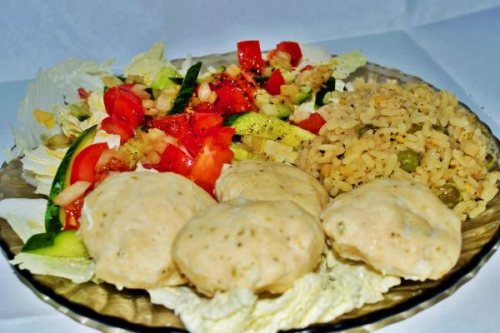
During the recovery stage, you can add the following products to the above list:
- Yesterday's wheat bread.
- Cracker.
- Low-fat soups with noodles and chopped vegetables.
- Lean meat in boiled or baked pieces, as well as boiled tongue.
- Lean fish in pieces.
- A small amount of milk for porridge.
- Fermented milk products with low fat content.
- Mild hard cheese (a couple of pieces).
- Scrambled eggs.
- Boiled pasta.
- Porridges are crumbly (except for wheat, pearl barley and barley).
- Potatoes, pumpkin, cauliflower, zucchini in the form of puree, casseroles.
- Baked or fresh mashed apples.
Prohibited foods for intestinal diseases
If you have an intestinal disease, consuming dairy products is prohibited.
The daily menu for a sick intestine should not include those foods that cause rotting and fermentation and contribute to gas formation.
Legumes and coarse plant fiber should be excluded. Vegetable fats are also not recommended, as they interfere with the absorption of nutrients.
Spices have an irritating effect on the digestive tract. Products that are prohibited:
- Fatty meats and fish;
- Legumes;
- Dairy products;
- Nuts;
- Spices;
- Fried eggs;
- Very salty foods;
- Fried and smoked dishes;
- Canned food;
- Sweet dishes;
- Mushrooms;
- Coffee;
- Caviar;
- Alcoholic and carbonated drinks;
- Fast foods.
Read: Table No. 9: principles of diet for diabetics
Authorized Products
When following diet No. 4, you must choose foods that are easy to digest and have astringent properties. The following items should be included in the grocery basket:
- Bakery products - yesterday's wheat bread made from premium flour, crackers, savory cookies.
- Lean meats and poultry - beef, chicken (without skin), rabbit, turkey.
- Dietary fish varieties - hake, bream, cod, carp, perch.
- Eggs – soft-boiled, omelet.
- Dairy products – calcined ground cottage cheese, acidophilus milk.
- Cereals – rice, semolina, oatmeal.
- Any boiled or grated vegetables.
- Fruits, sweets, dessert dishes - applesauce, quince, blackcurrant infusions, jelly, jelly.
- Drinks – tea, coffee, water cocoa, herbal infusions.
Article on the topic: Brain glioma - hope only lies in the surgeon and God
Colon cleansing as disease prevention
Grapefruit is a product that removes salts and toxins from the body.
Since ancient times, colon cleansing has been considered the best means of prevention for various diseases, not only those of the gastrointestinal tract.
Waste substances regularly remain in the intestines, which, normally, the intestine itself should remove.
However, with poor nutrition or the influence of other factors, the functionality of the intestine can be impaired, which over time can lead to such serious consequences as diabetes, intestinal cancer, hemorrhoids, and myocardial infarction.
To prevent unpleasant manifestations, you need to include in your diet foods that cleanse the intestines of toxins. There are special programs for cleansing the intestines that allow you to individually select products for each person.
However, for any program there is one general requirement - to maintain a plentiful drinking regimen (at least 8 glasses of water per day). Each day of cleansing should begin with a glass of water at room temperature drunk on an empty stomach. Products that can cleanse the intestines:
- Grapefruit. Removes salts and toxins from the body, increases appetite, cleanses the intestines. Grapefruit juice contains more nutrients than any other 100% fruit juice.
- Prebiotics and pribiotics. Effectively cleanse the intestines and increase healthy microflora.
- This includes all fermented milk products, bananas, sauerkraut, onions, and garlic.
- Whole grain cereals. If prepared correctly, they effectively cleanse the intestines.
- Buckwheat, millet, oatmeal, and barley will be useful.
- Products containing fatty acids. Vegetable oils, fatty fish, seeds, seafood, seem to lubricate the intestines from the inside, thus promoting the removal of toxins.
- Beets and carrots. Beets are best consumed boiled; carrots can be eaten raw.
- Edible algae and sea vegetables. These products are low in calories and contain large amounts of minerals and vitamins. They normalize intestinal function; many bind toxins and remove them from the body.
Laxatives such as castor oil, hay grass, salt water, and magnesia are also suitable for quickly cleansing the intestines. It is important to know that with serious intestinal diseases, the absorption of food can be very difficult. Therefore, nutrition should be sufficiently balanced and high in calories. However, you should not eat foods that increase the load on the digestive organs.
About irritable bowel syndrome - in a detailed video:
Read along with this article:
- Anatomy of the human intestine: what's what
- Small intestine: length and role in the digestive process
- What should be the diet for intestinal inflammation?
- Anatomy of the colon and its main functions
- Superficial colitis - classification, diagnosis and treatment of the disease
- Diet for Crohn's disease: what is possible, what is not?
- What should be the diet for constipation in adults?
- Diagnosis of volvulus: symptoms and treatment
- Diseases of the small intestine: features, causes, treatment,…
Reviews and results
It must be remembered that this diet is therapeutic and is prescribed by a doctor. This is a rather complex diet that has many restrictions, but it is designed for a week and this period can be maintained; a few days of such nutrition are enough to restore normal intestinal function. Compliance with the recommendations is a guarantee of rapid improvement. This is evidenced by patient reviews.
- “... I suffer from chronic pancreatitis and often in the summer, when I eat a lot of vegetables and fruits, this condition occurs. Pain in the intestines and frequent stools with undigested food intensify. In such cases, I go on this diet and strictly adhere to it for a week, and after 2 weeks I begin to introduce sweet dishes and stewed vegetables. The condition immediately improves”;
- “... After treating severe pneumonia with antibiotics, terrible bloating, gas formation and unstable stools appeared and this lasted for about a month - getting worse and worse. I had to see a doctor because I couldn’t cope with this problem myself. I did stool tests and cultures and was diagnosed with dysbacteriosis (there were very few lactobacilli). In addition to Atsipol, a strict diet was prescribed. And only after two weeks it got better”;
- “... During my vacation in the summer, I felt what it was like. Apparently the heat, drinking too much and an abundance of poorly washed fruit had an effect. The holiday was ruined, although I didn’t feel very ill, but for a whole week I had to strictly follow a diet - no fruits, soda water or sweets were out of the question. I noticed that as soon as I ate a sweet bun or drank soda, it worsened again. Upon returning home, I took up nutrition more seriously.”



